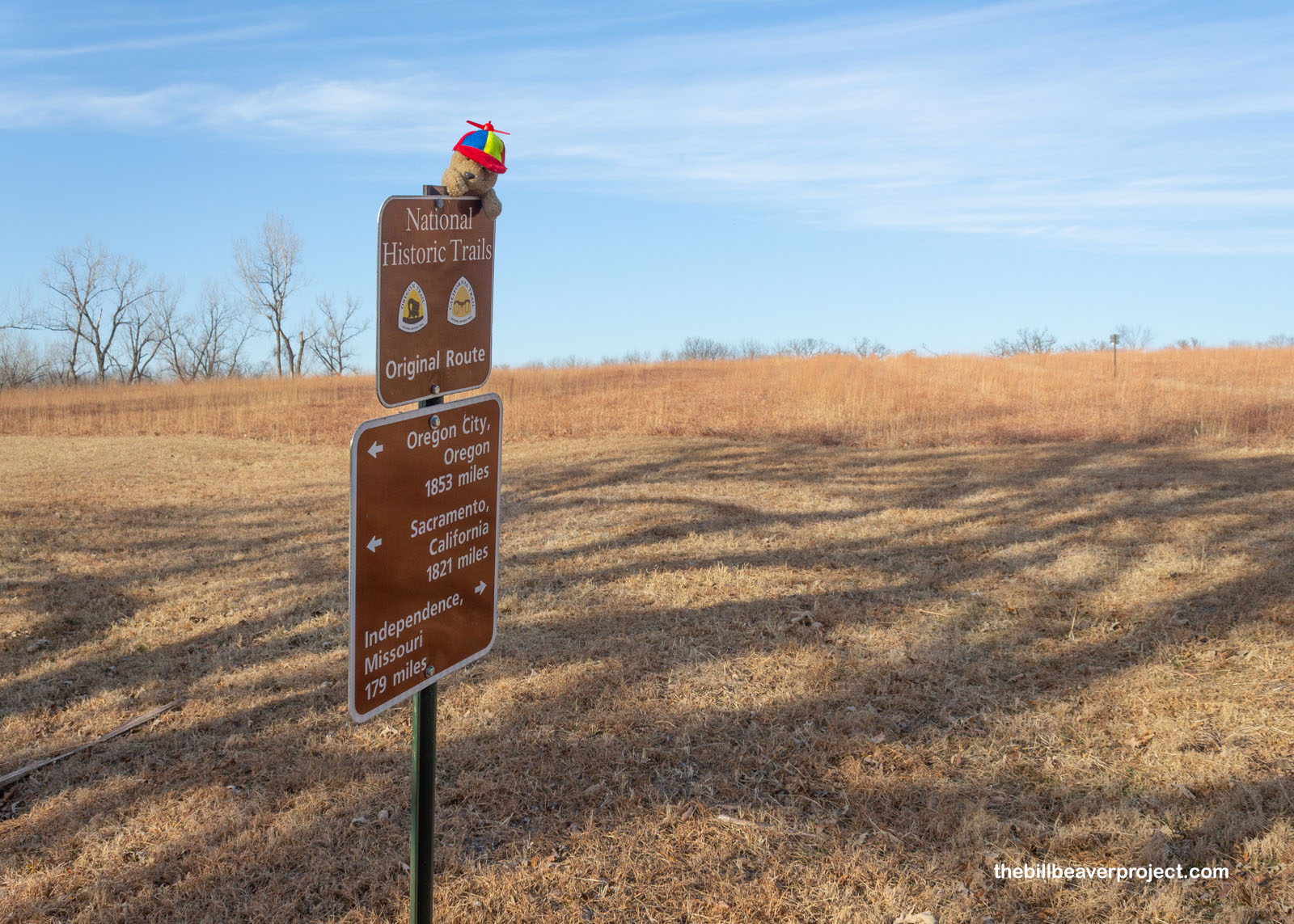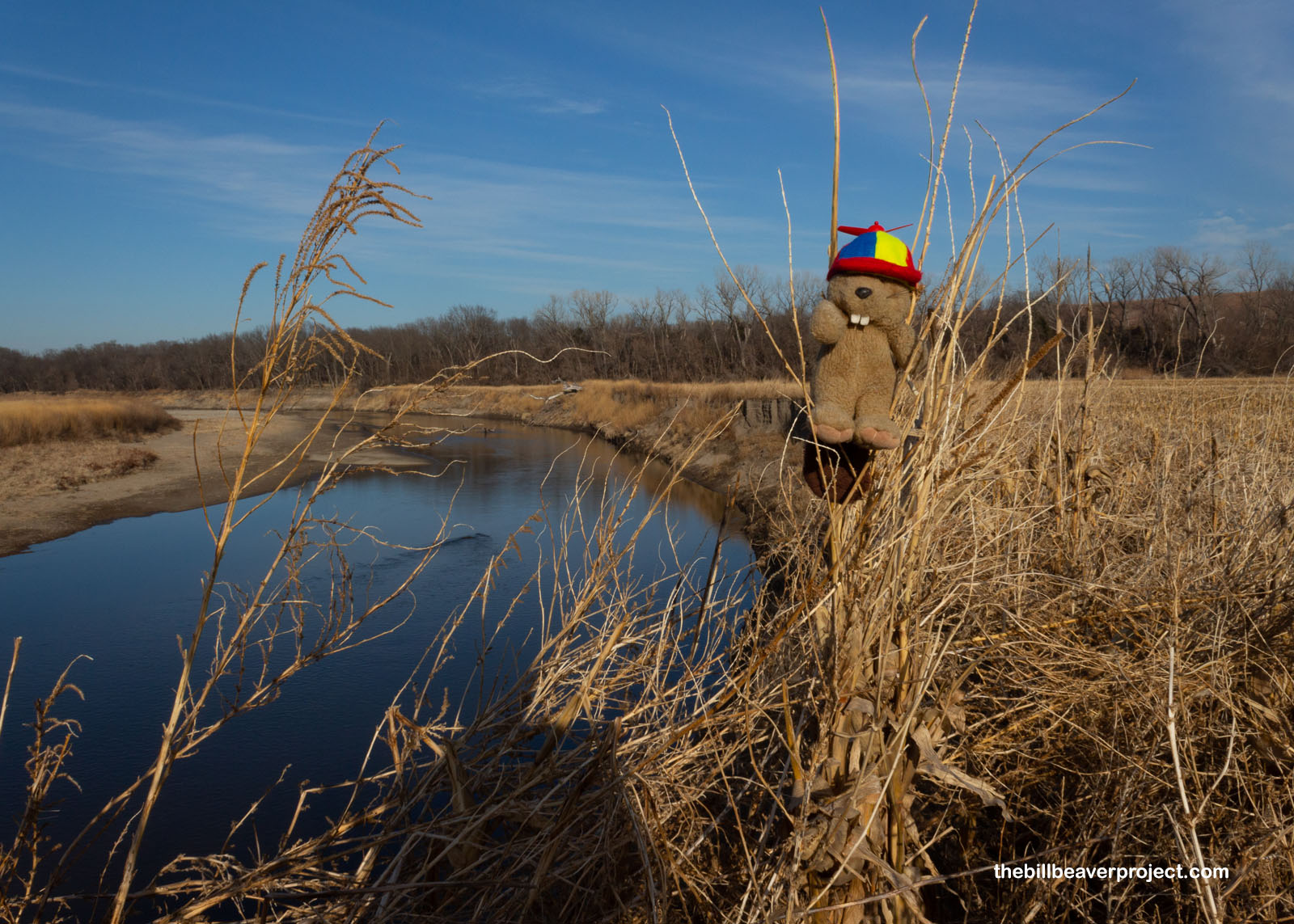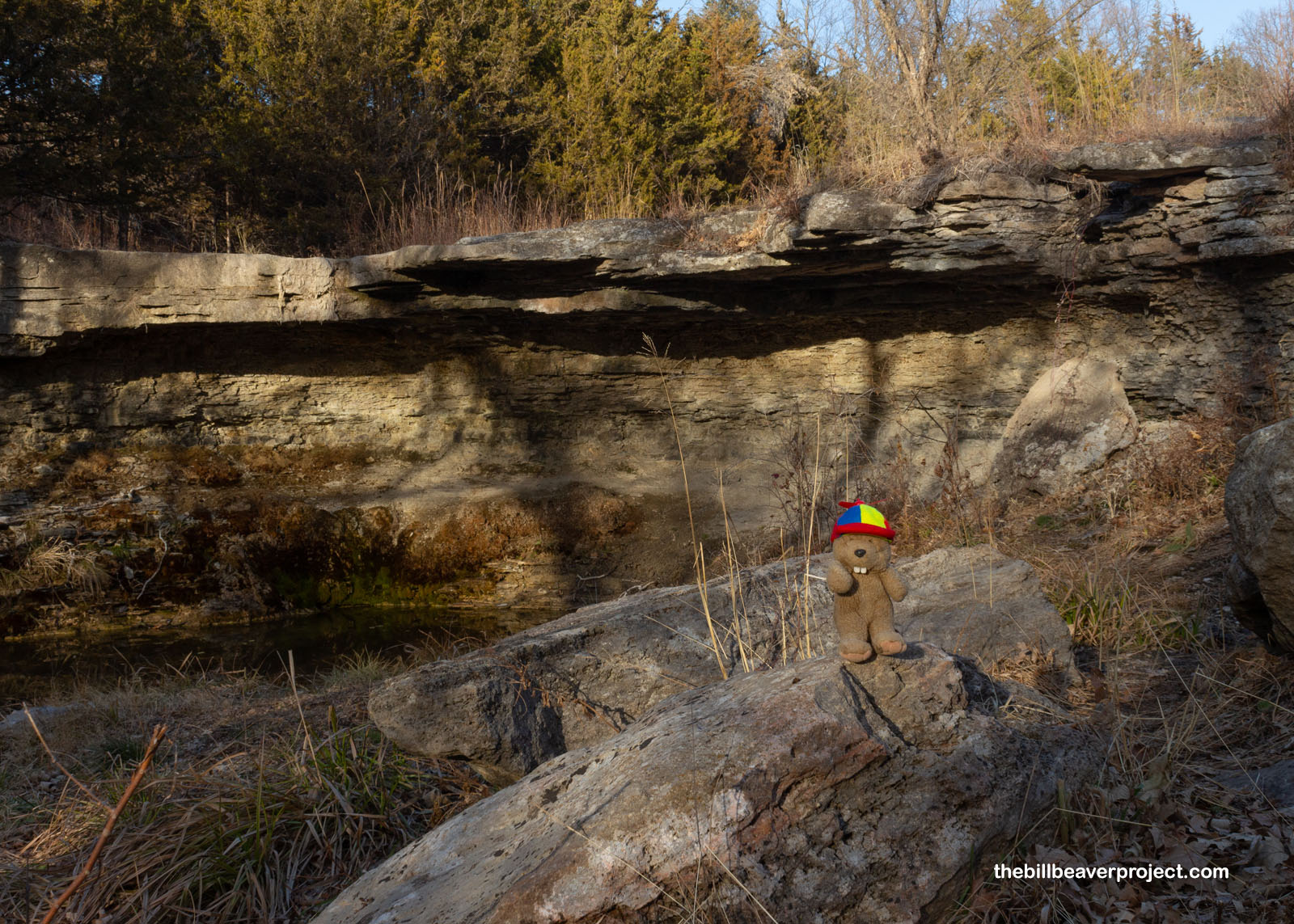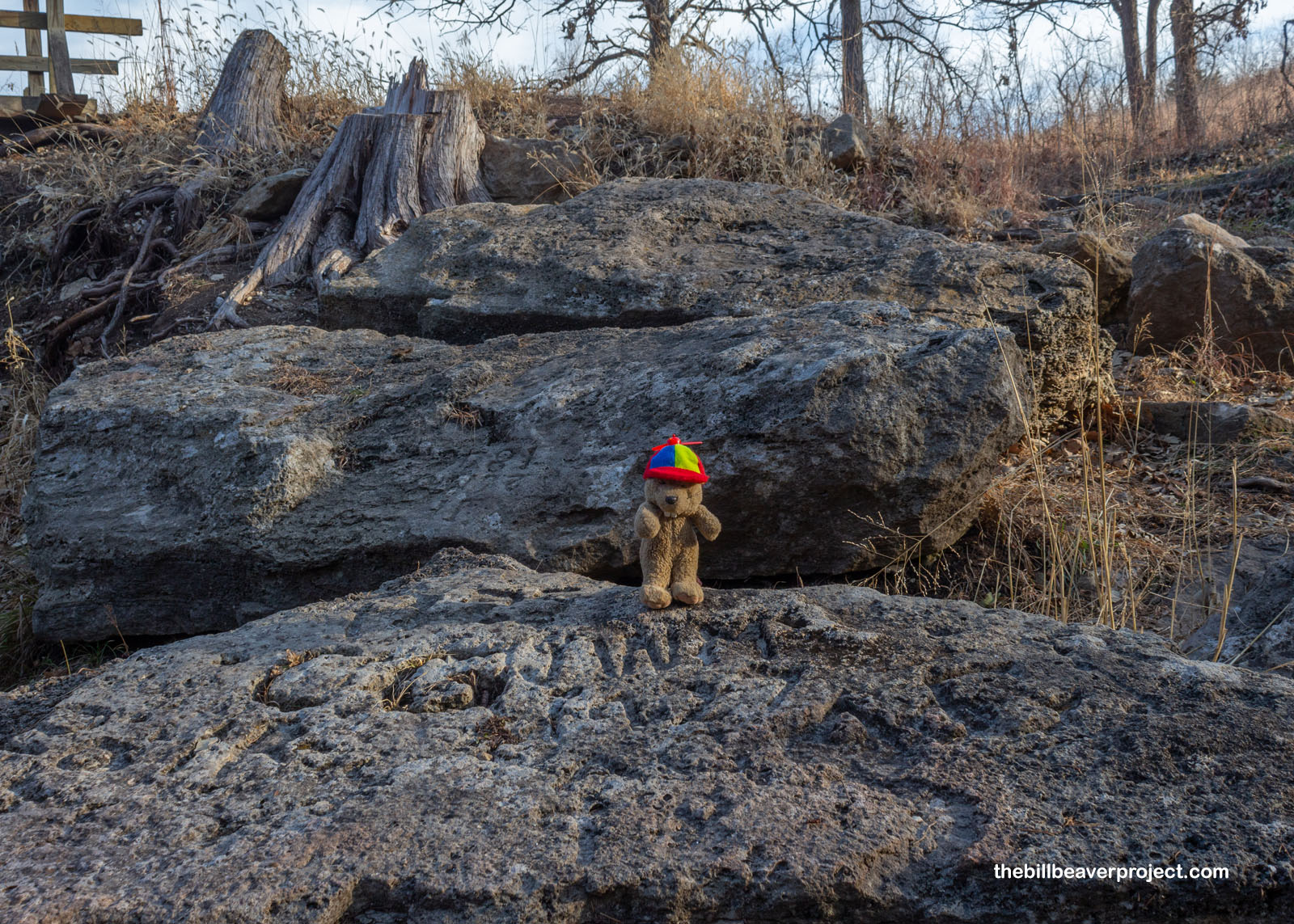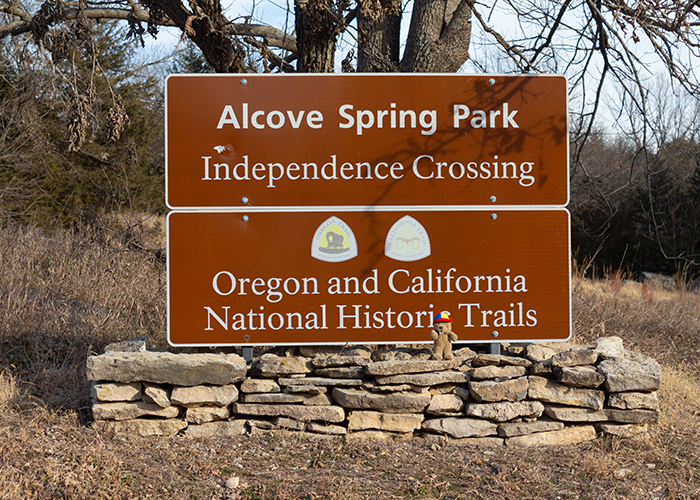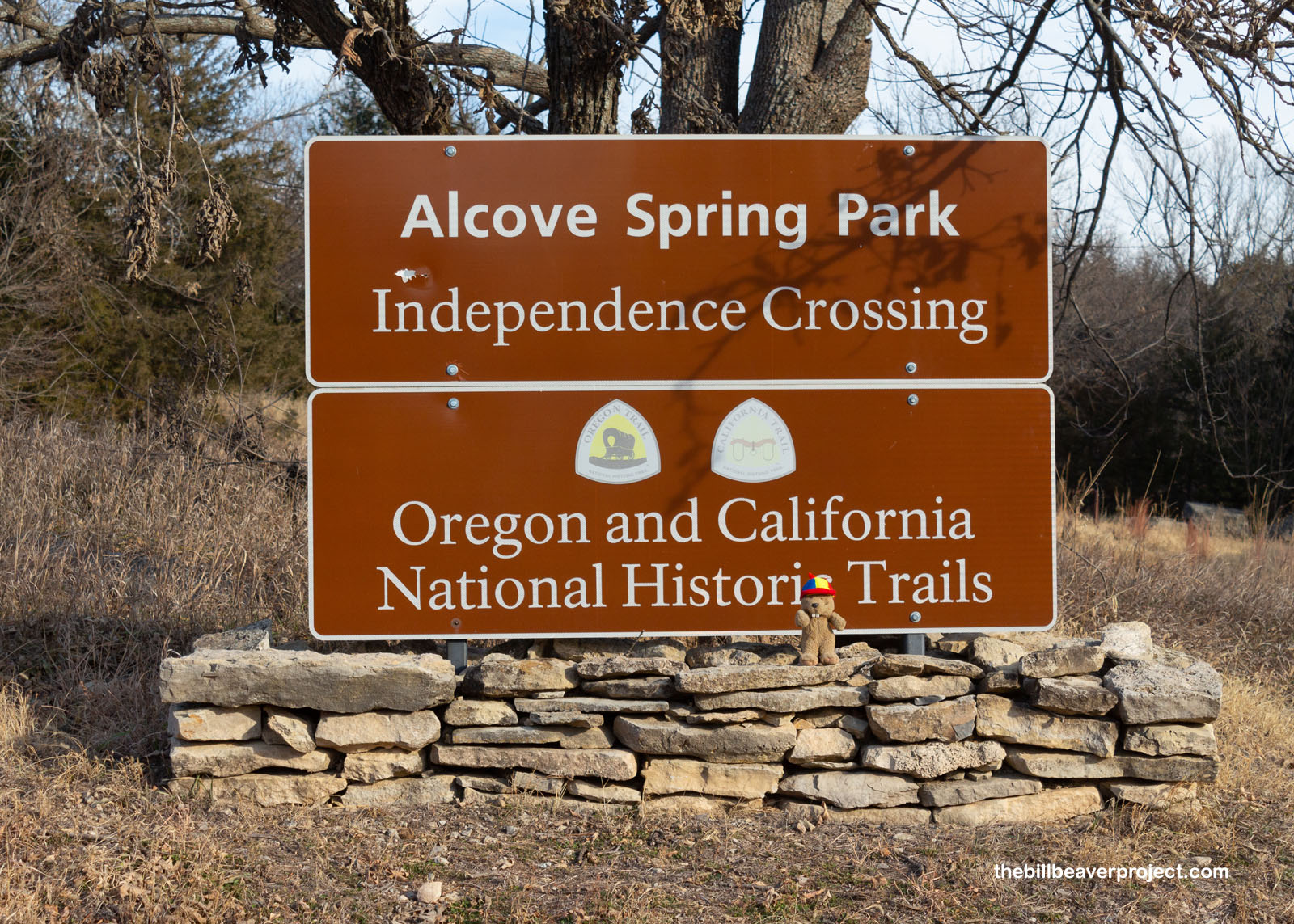
What Is Alcove Spring?
This fifth river crossing on the Oregon and California trails was a major stopping point for westbound emigrants from the 1840s until the 1870s!
What Makes It Historical?
After longtime use by local tribes, ths natural spring became a stopping point on the fur trade route between the Wind Rivers and St. Louis (1827), a resting spot for surveyors (1832), then a staging spot for westbound emigrants like the Bidwell-Bartleson party party in 1841! Alcove Springs saw the likes of John C. Frémont, Kit Carson, and John Sutter pass through here, waiting to cross the Big Blue River, all before 1842!
But today, Alcove Springs is most remembered for its relevance to the Donner-Reed Party, who stopped here in May of 1846! High river levels delayed them here for five days, during which time, members of the party, like James Reed, carved their names on the rocks at the spring. They also had their first casualty, Mr. Reed’s mother-in-law, Sarah Keyes, a taste of the horrors that awaited them later in the Sierras!
This was also a major stopping point on the Mormon Trail, so much so that, for a while, Independence Crossing became known as Mormon Crossing! This area was in use through the Gold Rush of 1849 until about 1870 when the Transcontinental Railroad made crossing the Plains in a wagon obsolete!
How Can I #HelpTheHelpers?
- Volunteer with the Kansas Historical Society!
- Donate to the Alcove Spring Preservation Association!
- Be a responsible visitor! Please respect the signs and pathways, and treat all structures and artifacts with respect. They’ve endured a lot to survive into the present. They’ll need our help to make it into the future!
How Do I Get There?
East River Road, 1.1 miles north of 8th Road
Blue Rapids, KS 66411
(Take Me There!)
When Should I Visit?
Whenever the mood strikes you!
More Photos
